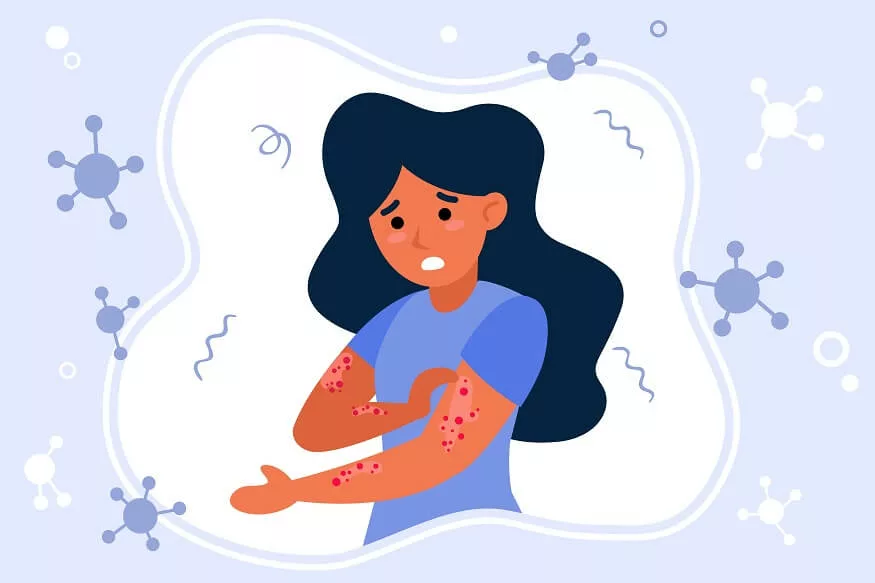Chickenpox, a highly contagious viral infection caused by the varicella-zoster virus, is a common childhood illness that can affect individuals of all ages. While often considered a rite of passage for many, it is essential to grasp the causes, symptoms, treatment options, and preventive measures associated with chickenpox. In this comprehensive exploration, we will delve into the intricacies of this ailment, shedding light on the various facets that make chickenpox a significant concern for individuals and communities.
Chickenpox Causes
Here are some causes of chickenpox
- Varicella-Zoster Virus (VZV):
- Transmission:
- Direct Contact:
- Airborne Transmission:
- Contagious Period:
- Incubation Period:
- Lifetime Immunity:
The primary and sole cause of chickenpox is the varicella-zoster virus. This virus is highly contagious and primarily affects humans. It is a member of the herpesvirus family, which also includes herpes simplex viruses responsible for oral and genital herpes.
The varicella-zoster virus is primarily transmitted from person to person through respiratory droplets. When an infected person coughs or sneezes, tiny droplets containing the virus become airborne. Another person can contract the virus by inhaling these respiratory droplets.
Chickenpox is also spread through direct contact with an infected person’s skin lesions (blisters). The fluid within these blisters contains the active virus. Touching the blisters and then touching the face, especially the mouth or nose, can lead to the transmission of the virus.
The virus can also be transmitted through the air over short distances. This means that being close to an infected person may put individuals at risk of inhaling the virus.
An infected person is contagious from about one to two days before the appearance of the rash until all the blisters have crusted over. This contagious period emphasises the importance of isolation to prevent the spread of the virus.
After exposure to the varicella-zoster virus, there is an incubation period before symptoms appear. The incubation period for chickenpox is typically between 10 to 21 days.
Recovering from chickenpox generally provides lifelong immunity to the disease. However, the varicella-zoster virus can remain dormant in the nerve cells and reactivate later in life, causing shingles. Shingles is a painful skin rash that occurs in people who have previously had chickenpox.
Also Read: Hand Foot And Mouth Disease: Causes, Symptoms, Prevention
Chickenpox symptoms
The symptoms of chickenpox include:
Initial Symptoms
- Fever:
- Headache:
- Fatigue:
- Red Spots:
- Blisters:
- Multiple Stages:
- Crusting:
- Healing:
- Intense Itching:
- Sore Throat:
- Loss of Appetite:
- General Malaise:
Chickenpox often begins with a mild to moderate fever, generally ranging from 38 to 39 degrees Celsius (100.4 to 102.2 degrees Fahrenheit).
Individuals infected with the varicella-zoster virus commonly experience headaches as an early symptom.
General feelings of tiredness and lethargy may accompany the initial stages of chickenpox.
Rash
Within a day or two of the initial symptoms, a red, itchy rash develops. These red spots can appear anywhere on the body.
The red spots evolve into fluid-filled blisters, giving the rash a characteristic appearance. The blisters are fragile and can easily break open.
Rash Progression
The rash often develops in crops, meaning new groups of blisters continue to appear while earlier ones progress to the next stage.
As the blisters fill with fluid, they eventually crust over. The crusted lesions signify that the contagious period is coming to an end.
Over several days, the crusted blisters gradually heal, leaving behind scabs. It’s important to avoid picking at or scratching the blisters to prevent scarring and secondary infections.
Itching
One of the most common and bothersome symptoms of chickenpox is intense itching associated with the rash. Scratching can lead to complications, such as bacterial infections and scarring.
Other Possible Symptoms
Some individuals may experience a sore throat or difficulty swallowing during the illness.
A reduced desire to eat is a common symptom, particularly in children with chickenpox.
A sense of overall discomfort and unwellness may be present.
Also Read: Home Remedies To Try For Children With Very Mild Fever And When To Seek Help
Chickenpox Treatment
Here are key aspects of chickenpox treatment:
Symptomatic Relief
- Fever Reduction:
- Hydration:
- Cool Baths:
- Calamine Lotion:
- Antihistamines:
- Trimmed Nails:
- Avoiding Aspirin:
- Isolation:
Over-the-counter medications such as acetaminophen (paracetamol) or ibuprofen can be used to reduce fever and relieve pain. Aspirin should be avoided in children with chickenpox, as it has been associated with a rare but serious condition called Reye’s syndrome.
Ensuring adequate fluid intake is crucial, especially if there is a risk of dehydration due to fever and reduced appetite.
Itch Management
Regular cool baths with mild soap can help soothe the skin and alleviate itching. Adding oatmeal or baking soda to the bathwater may provide additional relief.
Applying calamine lotion to the affected areas can help reduce itching and soothe the skin. Calamine lotion is a mild astringent that can also promote the drying of the blisters.
Over-the-counter antihistamines, such as diphenhydramine, may be recommended to relieve itching and promote better sleep. However, caution should be exercised, especially in young children, as some antihistamines may cause drowsiness.
Keeping fingernails short can prevent excessive scratching, reducing the risk of bacterial infections and scarring.
Preventing Complications
As mentioned earlier, aspirin should be avoided in children with chickenpox due to the risk of Reye’s syndrome, a rare but severe condition affecting the liver and brain.
Individuals with chickenpox should isolate themselves from others, especially those at a higher risk of complications, to prevent the spread of the virus.
Monitoring for Complications:
Medical Attention: If there are signs of complications, such as high fever, severe cough, difficulty breathing, or if the rash becomes very red or warm, seeking medical attention is essential.
Vaccination for Those at Risk
Post-Exposure Prophylaxis:
Unvaccinated individuals who have been exposed to chickenpox and are at high risk of severe disease may receive varicella-zoster immune globulin (VZIG) as a preventive measure.
For treatment, always consult with a healthcare professional for an accurate diagnosis and appropriate treatment plan. They can recommend the most suitable medications based on the type of worm identified and the individual characteristics of the case.
Also Read: What To Anticipate Before, During And After Your Baby’s Immunisation Shots
As we continue to navigate the complexities of infectious diseases, EuroSchool says staying informed and proactive remains key in mitigating the impact of chickenpox and safeguarding the health of future generations.











